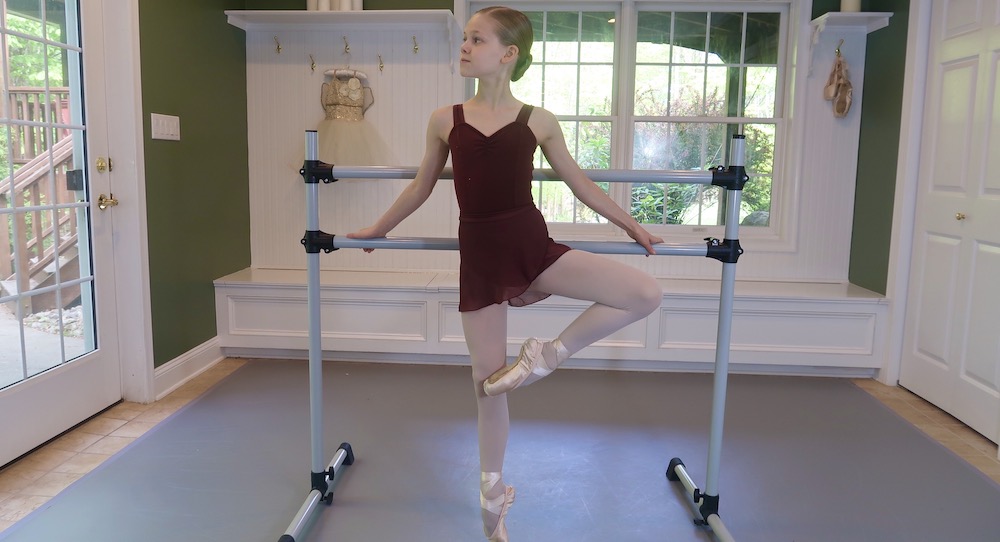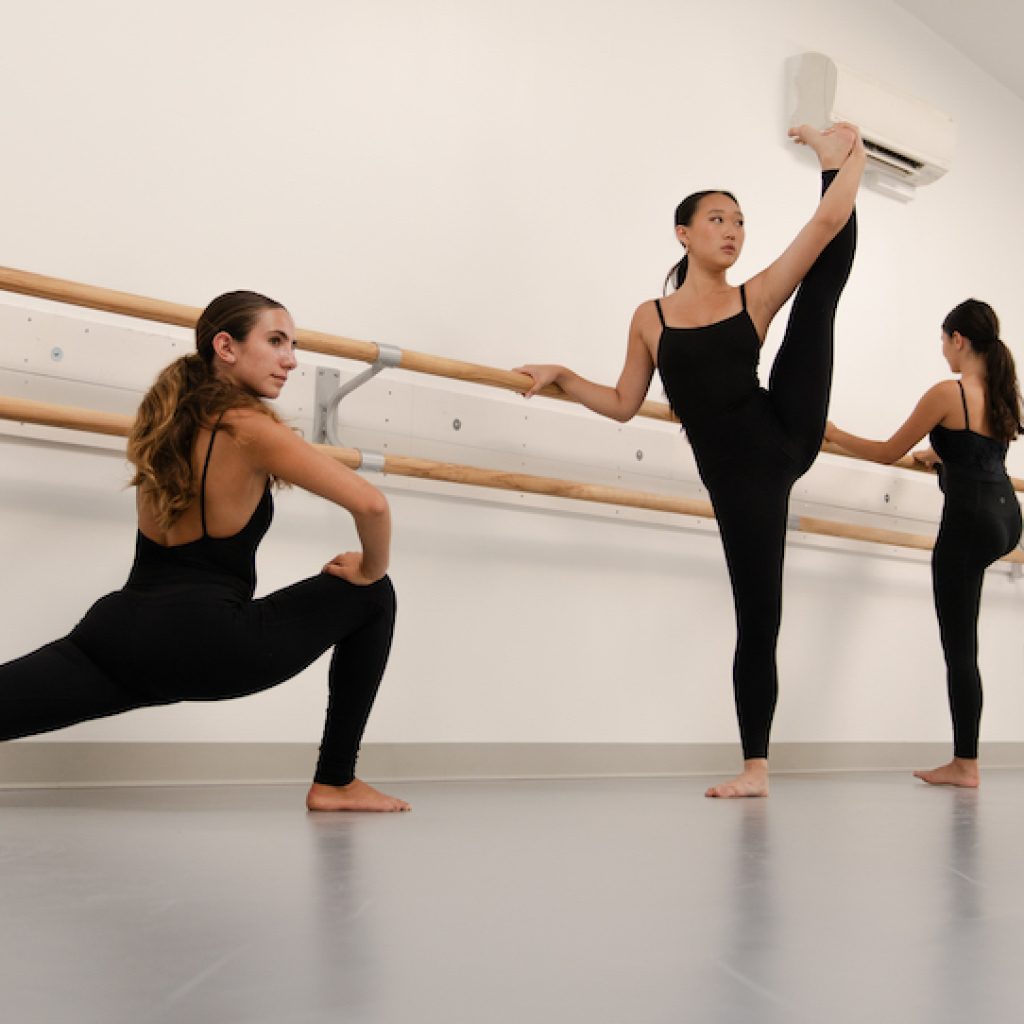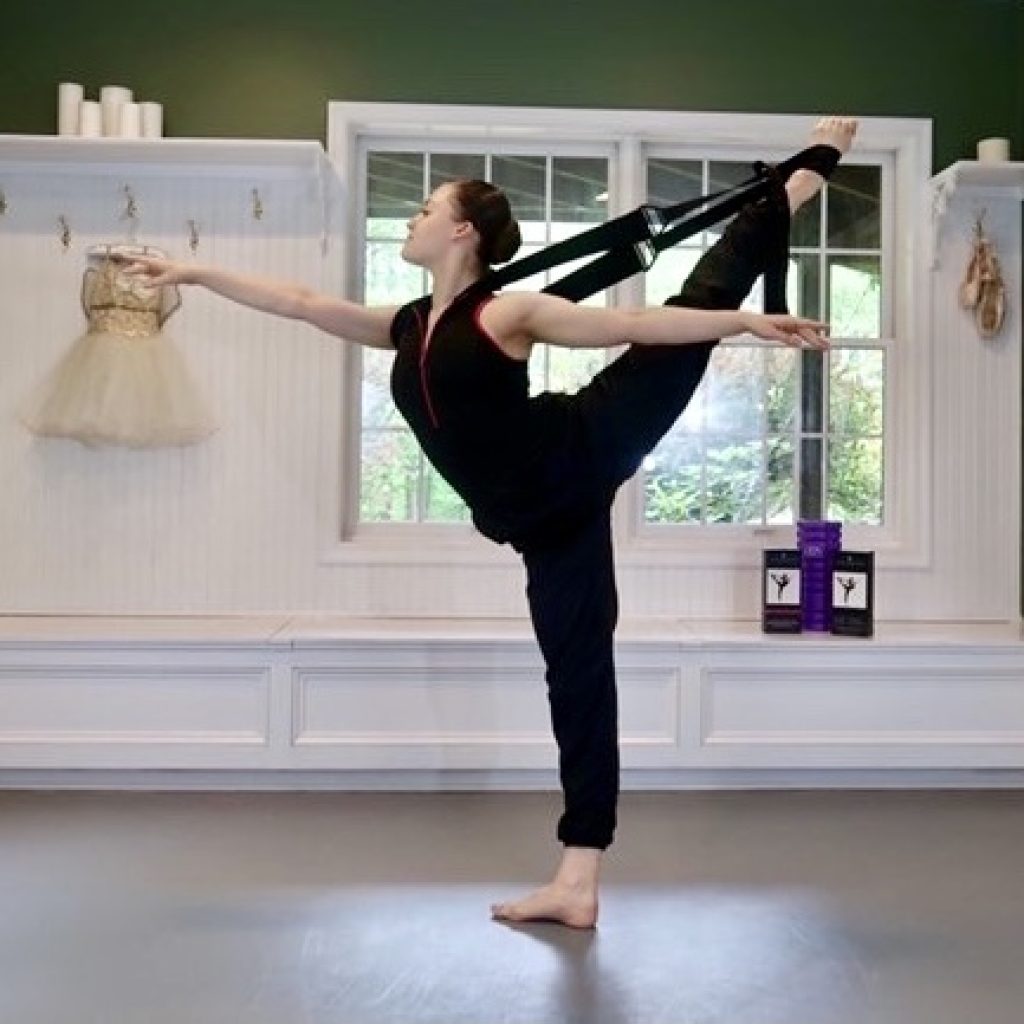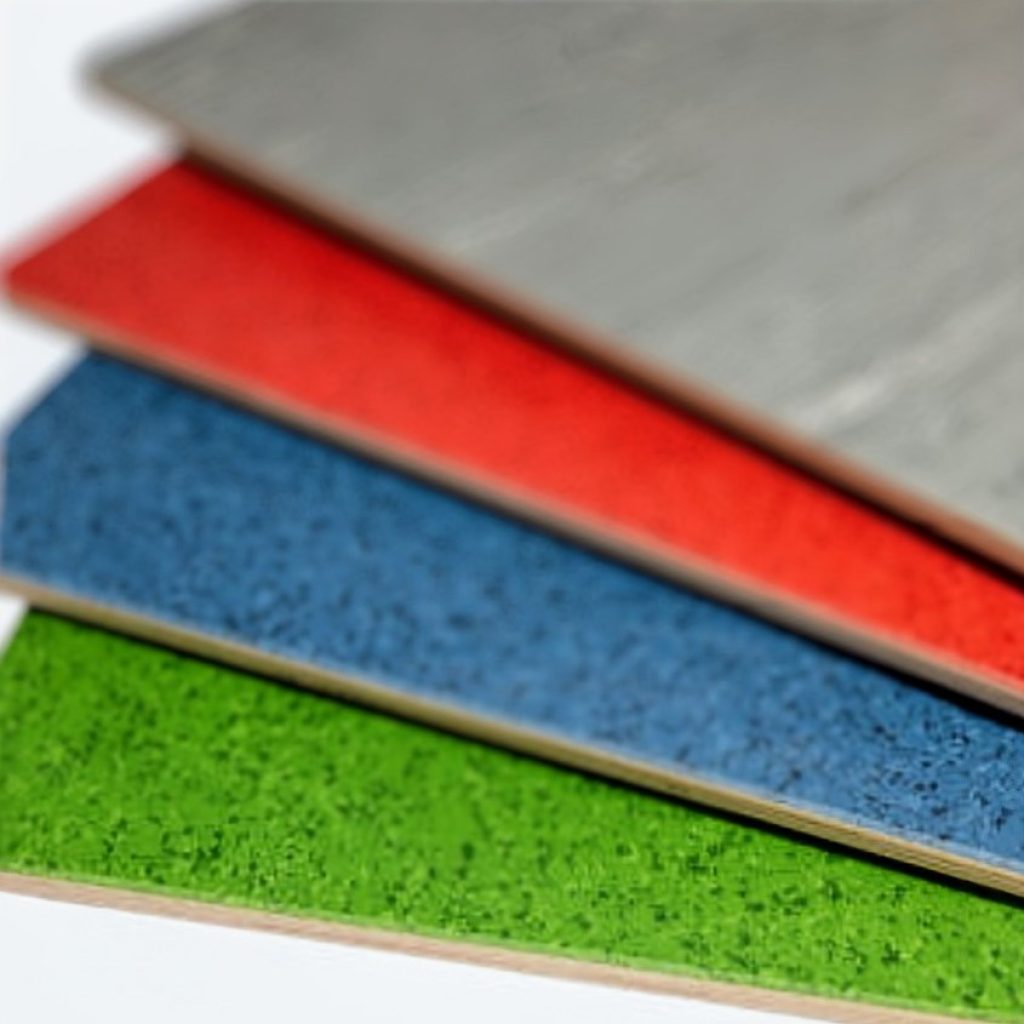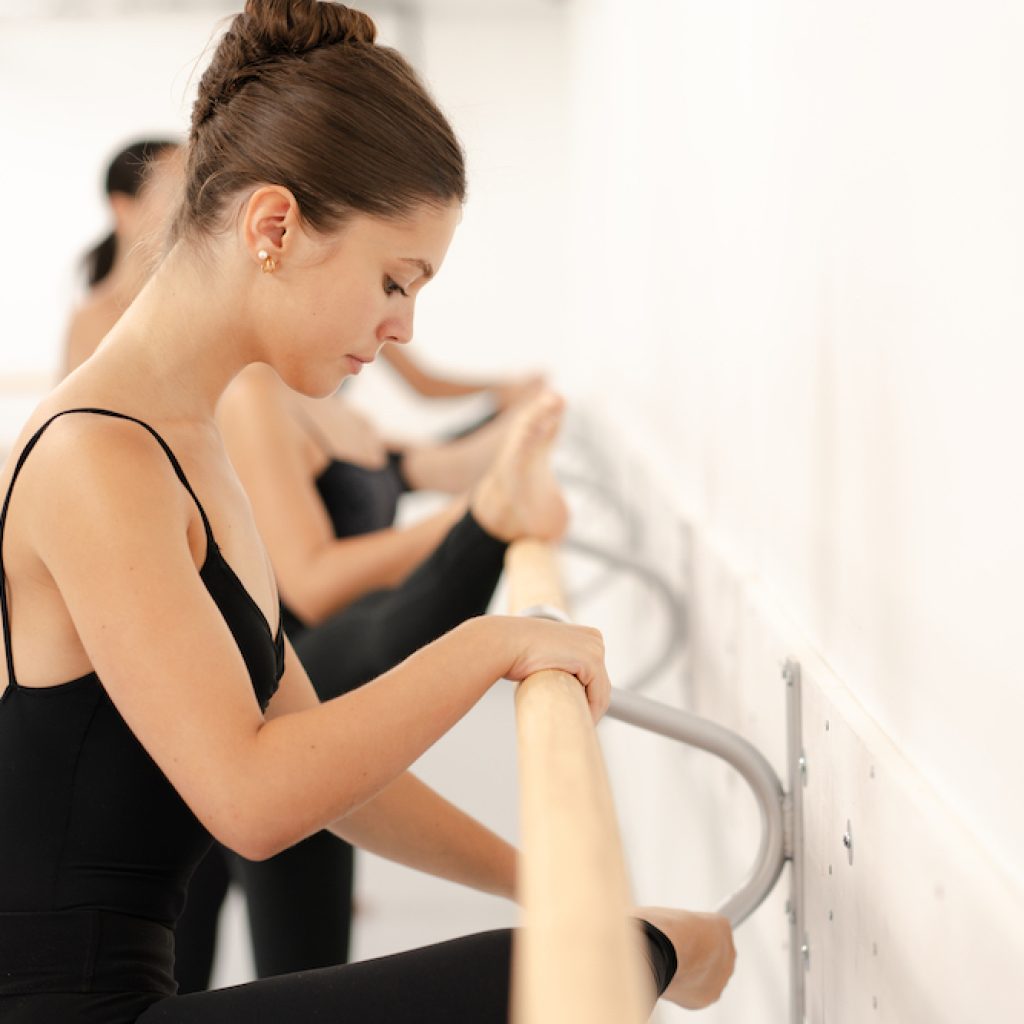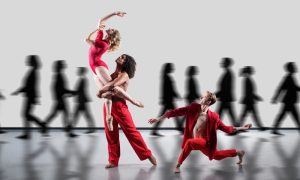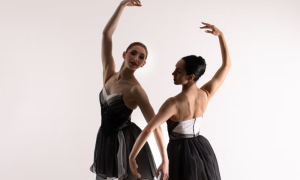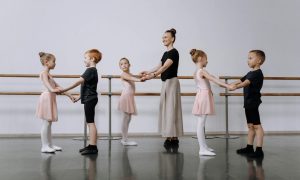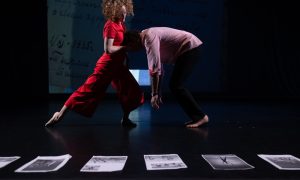Summer is winding down, and fall is right around the corner. That means dancers are gearing up for an exciting new season. It might be time to bring your training to the next level by adding a home studio. A home studio can keep your technique consistent and augment what you are learning in person. Best of all, home studios are perfect for hybrid or virtual classes.
Stagestep has been working with dancers and offering high-quality flooring for over 50 years. The company has provided flooring for the Joffrey Ballet School, the San Francisco Ballet and the Martha Graham Dance Company, in addition to numerous private studios. Stagestep has excellent products and the expertise to help ensure you are dancing your best.
During the pandemic, dancers of all levels and ages were forced to make do at home: a countertop for a ballet barre; carpet, tile and even — yikes — tap on concrete. Most people quickly discovered that these options did not replace a good-quality dance floor with proper cushioning underneath. Stagestep wants dancers to be safe and happy no matter where they are.
Dennis Libro, Inside Sales Rep. for Stagestep, says having a proper set-up is crucial for safety in the at-home studio. He explains that if you are not dancing on the right surface, it affects your joints. “Set yourself up for success,” he explains. “You want your home dance space to feel as close to your [in-person] studio as possible.” Safety is first and foremost at Stagestep. “It is really important to always have the proper set-up.”
This starts with where the floor goes in your home space. “We always say to avoid tile, concrete and carpet. Joint health is the most important thing,” Libro advises. There is no give on concrete, which can damage joints, muscles and bones — especially in young, developing bodies. Subflooring is crucial, and some kind of support and cushioning is needed.
Stagestep sells pre-cut Marley in a variety of styles. The Marley surface of the pre-cut pieces can go over plywood or other similar surfaces, but the company recommends some kind of subfloor or structure underneath. Marley flooring is a good start, but not enough on its own. “You need something for the long term. You need something that gives,” advises Libro.
Stagestep’s Ballet Boards are perfect for making pointe work safe. They have a textured surface for non-slip with a long-lasting sprung board complete with a foam backing for joint protection and fatigue reduction.
For professional and pre-professional dancers like the Quiner Sisters, a safe and reliable surface makes all the difference. Michelle Quiner shares, “I often use our home studio during layoff to do an at-home ballet class or workout to stay in shape. Having the Marley is wonderful because I can trust that I’m dancing on a safe surface, which is especially helpful when I want to practice in pointe shoes.”
Her sister Elliana agrees, adding, “I do stretching and strengthening in our home studio, and I use it to break in my new pointe shoes during the year. When there are days off or breaks at ABT’s JKO School, I do a home ballet class. It helps me stay in shape and be prepared for when classes begin again.”
Savannah Quiner loves the portability of smaller surfaces, noting, “I love using the Marley ballet board to practice pirouettes! The platform is firm but also supportive, so it’s perfect for turning.”
Stagestep’s Timestep flooring can be used for a myriad of dance styles, including tap. Timestep surfaces are stiffer than Marley, which helps amplify tap sounds. The tap boards are available in a variety of vibrant colors — marbleized grey, cinabre red, santorini blue, clover and orchid — allowing dancers of all ages to express themselves at home. An improved handle allows for more tap space, and extra high-density foam helps with shock absorption. Limited space is not a problem when it comes to the tap boards. They are available in 4.3- or 4.2-foot sizes and are the perfect choice for solos or duets.
Before installing proper flooring, the Quiners experienced firsthand the challenges of dancing on the wrong surface. Jillian recalls, “We had carpet in one area and tile flooring right next to it. Contemporary was only possible on the carpet, while ballet on the tile proved difficult — it was uneven and hard to dance on. And pointe shoes on carpet? Definitely not ideal! The padded Marley floor has been a perfect solution.”
Another great feature of Stagestep products for home studios is the ease of storage after use. Marley strips can be rolled up and stored conveniently in a corner. Ballet and tap boards have a handle and are lightweight, with the largest weighing only 35 pounds. They can be picked up and placed against a wall or tucked away out of the way. Michelle points out that you don’t need an entire room to benefit: “Our home studio is not very big, but it works great! Make sure you have enough space to move around comfortably. Doing a ballet barre, stretching and strengthening doesn’t need an entire room.”
If you want to go all the way with your home studio, Stagestep has options where you can build your own subfloor. The brand provides detailed instructions on how subflooring works. It sells the foam, and customers, if desired, can supply their own wood. Foam-backed Marleys are available and can go over a variety of surfaces. Libro mentions Stagestep’s excellent customer service, where representatives talk you through building your studio: “We give the best advice possible.”
Michelle remembers their own installation process: “We originally chose it because it was the most affordable, and we liked that it had padded Marley since we have a hard tile floor in our dance room. We didn’t even realize at the time what a high-quality floor it was! It is also incredibly long-lasting. We’ve been using this floor since March 2020, and it still works as good as ever!”
It’s not just about safety — it’s about smart training habits. Caroline Quiner recommends “strength training in the form of home workouts. It’s so important for dancers because it maintains and builds strength and ability, as well as prevents injuries when you are dancing in the studio.” Rachel adds, “Try to find a spot in your house with wood because it’s the safest for your joints. Even better, put in a Marley floor for padding, support and friction.”
It is important to take care of your home studio so that it lasts a long time. Stagestep’s ProClean is easy to use and pH-neutral. It can be used on Marley floors to clean up grime and residue. Another popular product is Slip NoMor, a concentrated liquid treatment that adds temporary traction to vinyl, wood, linoleum and other non-porous surfaces. It can be used in studios, on stages or in any performance space. It provides temporary non-slip traction without damaging your floor. For heavy tap use, Libro recommends FloorShield Finish. It delivers enhanced non-slip treatment and wear protection. It requires no waxing, buffing or burnishing. It protects and preserves the floor you have and can last up to 12 months.
Taking care of your body and your home dance floor is a win-win. Happy dancing!
By Mary Carpenter of Dance Informa.
Sponsored content.


